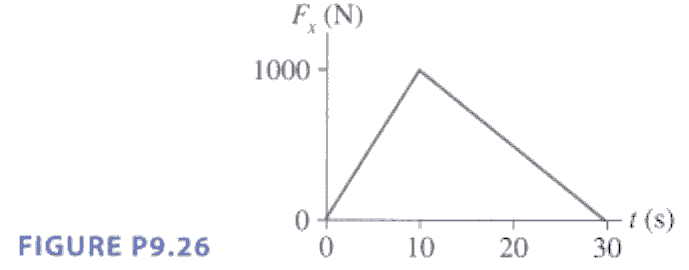CHAPTER 9
- (P.263 Prob.26) Far in space, where gravity is negligible, a 425-kg
rocket traveling at 75 m/s fires its engines. Figure P9.26 shows the thrust
force as a function of time. The mass lost by the rocket during these 30 s
is negligible.
a. What impulse does the engine impart to the rocket?
b.
At what does the rocket reach its maximum speed? What is the maximum speed?

- (P.264 Prob.32) Three identical train cars, coupled together, are rolling
east at 2.0 m/s. A fourth car traveling at 4.0 m/s catches up with the three
and couples to make a four-car train. A moment later, the train cars hit a
fifth car that was at rest on the tracks, and it couples to make a five-car
train. What is the speed of the five-car train?
- (P.264 Prob.36) A firecracker in a coconut blows the coconut into three
pieces. Two pieces of equal mass fly off south and west, perpendicular to each
other, at 20 m/s. The third piece has twice the mass as the other two. What
are the speed and direction of the third piece?
- (P.264 Prob.44) Two 500-g blocks of wood are 2.0 m apart on a frictionless
table. A 10-g bullet is fired at 400 m/s toward the blocks. It passes all the
way through the first block, then embeds itself in the second block. The speed
of the first block immediately after ward is 6.0 m/s. What is the speed of the
second block after the bullet stops?
- (P.266 Prob.66) Challenge Problem. A 75-kg shell is fired with
an initial speed of 125 m/s at an angle 55° above horizontal. Air resistance
is negligible. At its highest point, the shell explodes into two fragments,
one four times more massive than the other. The heavier fragment lands
directly below the point of the explosion. Iif the explosion exerts forces
only in the horizontal direction how far from the launch point does the
lighter fragment land?

